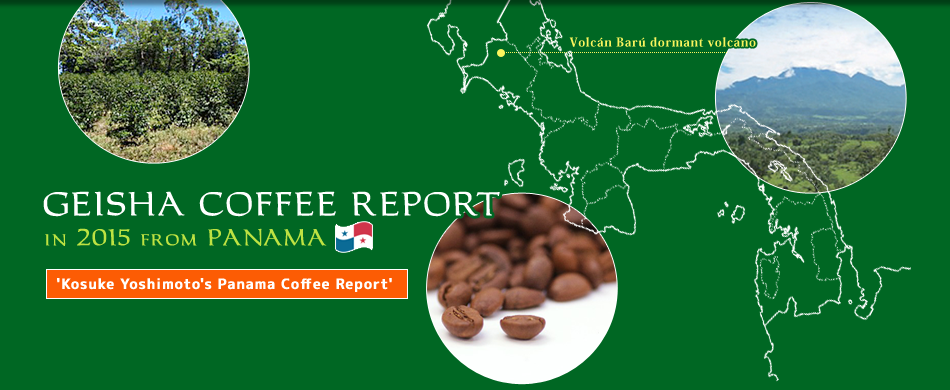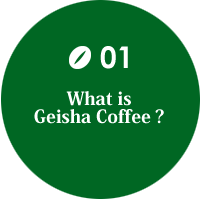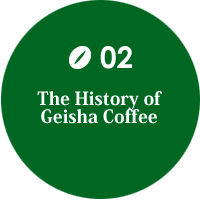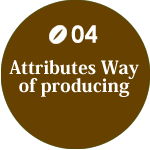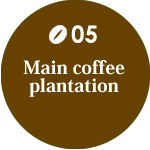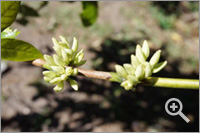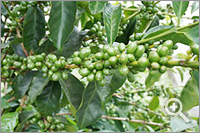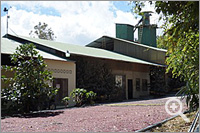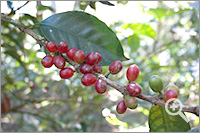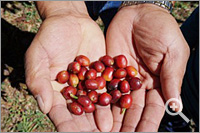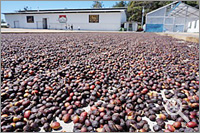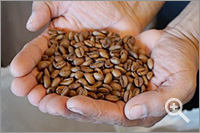What is Geisha Coffee ?
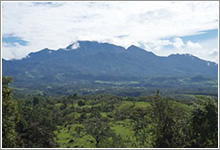
Geisha Coffee, a new premium coffee blend, is valued by coffee lovers for its vivid character and bold taste.
This world-acclaimed coffee was first cultivated in Costa Rica with plants from the Gesha region of Ethiopia, and is now grown in Panama.
The trees, with their beautiful thin leaves, grow very high.
These high altitude and high value beans are visibly different from other varieties, being long and slender. Especially the Geisha got only at the high ground is considered as the one with the best quality.
With a refreshing flavor of berries, citrus fruit, mango, papaya and peach, and a finish similar to bergamot, the profile of Geisha makes it a champion among coffee varieties.
The History of Geisha Coffee
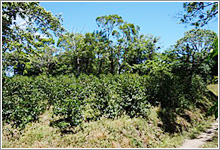
Geisha Coffee is relatively young in a history of coffee, and it started in 1931 when it was found in Gesha village in the South East of Ethiopia. The name, “Geisha” has no connection with Japanese “Geisha”. It was named after the place of origin: Geisha village.
Geisha beans were brought to the Tropical Agricultural Research and Higher Education Center (CATIE) in Costa Rica in Latin America in 1953, through Kenya and Tanzania. Then Geisha species were got into Panamanian plantations in the middle of 1960s. But Geisha species grew slowly and produced less than half coffee cherries in a tree compared with usual species. In addition to that, they tasted bad because they were cultivated at the lower ground. At the result, Geisha trees were replaced by other species and they were laid aside.
In 2000 after several decades had passed, Geisha trees, which were grown up in the Esmeralda plantation in the Boquete area of Panama, produced red big coffee beans like Olives. This is “the rediscovery of Geisha coffee”. When they put the Geisha coffee up to a coffee auction, the high quality and good taste that had never been experienced made many authenticators surprised. And the Geisha coffee was auctioned for $21 per pound, which is ten times of usual coffee price. This news was enhanced to coffee lovers all over the world, but valuable Geisha coffee was difficult to get and was not a type of coffee that everyone could drink.
After the auction, the price of Geisha coffee continued to rise up every year with high reputation from authenticators, coffee lovers, and roasting experts in the world. Since it auctioned for $350 per pound in 2013, Geisha coffee has been looked as the most expensive coffee in the world. Now many plantations cultivate Geisha coffee beans pursing higher quality with the originality of each.
Photos of Geisha Coffee
※When clicking a picture, you can see it with a big picture.
Attributes & Way of producing


Geisha coffee is expressed as “The miraculous and the best coffee in the world”, “The most expensive one”, or “Coffee with refined fruity flavor and sweet taste”. It has a refined sweet taste like a full ripened tangerine and a flavor like a flower of Jasmine.

There are two ways to produce Geisha coffee. One is the Natural way and the other is the Washed way.
The natural way:Dry coffee cherries under the sun after harvest, and take out coffee seeds.
The washed way: Take coffee seeds out of coffee cherries after harvest, wash them with water and dry them.
Main coffee plantation
Valentina:Winner of the Cup of Excellence in 2011, and fifth place in 2012. Grown at an elevation of 1,500 meters.
Hartman:This year's Geisha coffee is sold out.
Carmen:Wataru & Co. is the Japanese importer.
Kotowa Eatate:Organic coffee beans, which won first place in the Cup of Excellence in 2012.
Esmeralda:Since 2004, first place winner of Cup of Excellence numerous times.
Valued at $21 per pound in 2004, and now trades at $350 per pound.
Morgan:Winner of sixth place in the 2014 Cup of Excellence
Volcan Baru:Second place winner in the Cup of Excellence in 2013. Also known as “Janson Coffee” Grown at an elevation of 1,700 meters.
Auromar:First place winner in the Cup of Excellence in 2013. Sold by Starbuks in Japan in 2014. Grown at an elevation of 1,600 meters.
Casa Ruiz:One of Panama's largest coffee plantations.
Don Pachi:Grown at an elevation of 1,600 meters. First place winner of the Cup of Excellence, Organic Section in 2011.
Lerida:Grown at 1,200 to 1,700 meters. Sold in Japan by Wataru & Co.
Tribaldo:Producer of organic coffee and vegetables. They do not produce Geisha coffee.
Willem Boot:2014 first place winner of Cup of Excellence. Valued at $107 per pound. Grown at 1,700 meters.
*Geisha coffee is grown by many other coffee plantations in addition to the ones listed above.
Specialty Coffee Association
SCAA, Specialty Coffee Association of America, was established in the U.S. In 1982. Japan, Brazil, Costa Rica, Panama and nations in Africa have also affiliated with the SCAA.
“Cup Profile” represents eight qualities: Flavor, finish, acidity, texture in the mouth, the degree of cloudiness in the taste, sweetness, balance and total evaluation.
SCAJ, Specialty Coffee Association of Japan http://www.scaj.org/
holding barista contests and seminars.
Specialty Coffee Association of Panama
They hold an International Cup Excellence of Panama including Geisha Coffee every summer in Panama.
Sales Agency in Japan: MRC Inc.
(Point Person: Mr. Konishi) ☎03-3500-0390
editor:Santosha Inc.


